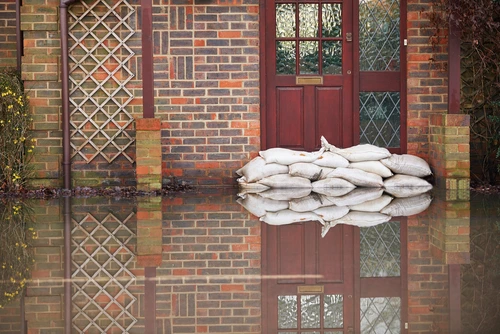
Flooding is one of the most common natural disasters worldwide, with the potential to cause devastation to land, people and infrastructure. Flooding can occur when heavy rain falls for prolonged periods, dams break, large amounts of snow melts, or large bodies of water spill over onto usually dry land. Now, a Future Flood Map of the UK has shown climate change could increase the flood damage bill by 20%.

While it may not be something commonly experienced in certain parts of the UK, the number of flood-related disasters is fast rising over the past decades. There are several reasons why flooding is a growing concern for homes in the UK.
Impact of floods
In the UK, extreme weather events are now four times more likely than in 1970. As our population grows, we naturally expand our cities and more and more earth becomes covered in concrete. The decrease in natural drainage space causes our drains and rivers to easily become full and overflowing when unusual weather hits. With the effects of climate change continuing, such as rising ocean levels due to the melting of large amounts of ice in Antarctica, it’s easy to see why experts predict we will see more flooding in the coming years.
Homes
Flooding can cause severe damage to our homes, from cracking wall foundations to buckling floors and even destroying electrical wiring. Aside from the structural damage, flooding can cause sewers to overflow and potentially contaminate our clean water supply. Repairing a home after flooding can cost £50,000 on average, so if you live in a high-risk flood area it’s important that you and your home are properly prepared.
The structural build of homes in high-risk flood areas needs to be different to those on higher ground, to reduce the risk of water damage to the properties. However, many homes are continuing to be built on floodplains in the UK, despite the flood risk. There is growing evidence that housing developments need to adopt new practices and designs to help protect from future flooding.
Economy
With businesses unable to run, people unable to work and emergency services stretched beyond their limits, flooding can quickly devastate large areas. Livestock is likely to be lost and farmland can become ruined, with residual water taking weeks or months to drain away before the land is suitable to grow crops again. People can also lose their lives or become stranded, and the local economy grinds to a halt.
On a larger scale, the consequences of flooding impact the county as a whole. As emergency aid is issued and survivors are rehoused out of the flood area, resources and money are needed on a massive scale. The impact of flooding, especially if it’s recurring, can largely depreciate the country’s gross domestic product (GDP).
Roads and traffic infrastructure
Unfortunately, roads are not immune to mass water damage. As the water sits upon the asphalt it seeps through and can cause cracks, potholes and deformation of the road surface. This can lead to massive costs of road repairs, as well as potential damage to vehicles once the water has cleared.
Cars will float away in only two feet of water, so when floods strike all the usual travel links can become impassable. People can find themselves unable to access hospitals, and the emergency services become strained and struggle to reach those in need. Deliveries of essential goods such as food and hygiene supplies are prevented and severe flooding can also cause landslides and mudslides, which cause further damage and complications.
As our city traffic infrastructure is constantly evolving, it’s imperative that the UK government works to defend the roads and public transport links from flooding in high-risk zones. While some £2.3bn capital investment has been set aside by the government to repair damage after flooding, some experts suggest that money would be better spent raising some roads or transport links in high-risk areas, to prevent the population from becoming cut off from the outside world in times of need.
Prevention may be the best cure
Although the media typically reports flooding in the UK as ‘unprecedented’ and ‘freak occurrences’, evidence suggests that parts of the country are indeed likely to flood. With global warming concerns not slowing down anytime soon, it’s important to look to the future and prepare for the growing concern of floods as we build homes in the UK.
[Read more: 160,000 social homes in England have damp and mould, report finds]






